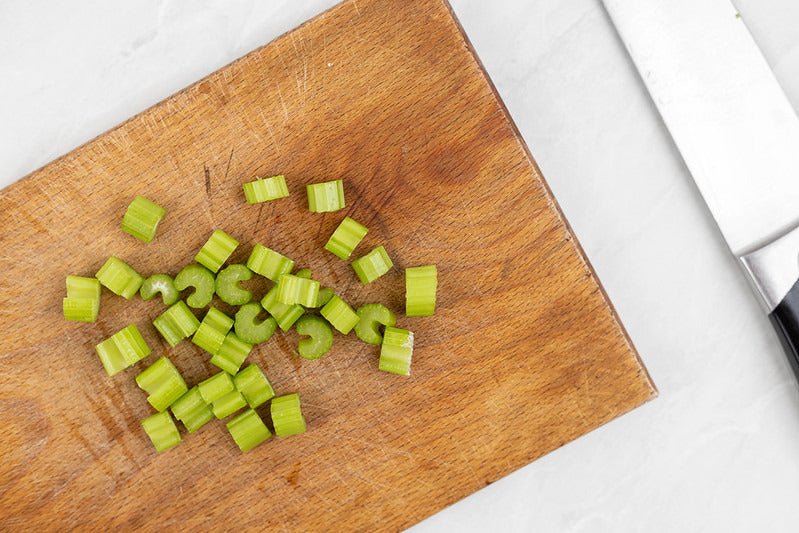Your Cart is Empty
FREE Worldwide Shipping! | +1 365 654 6605
FREE Worldwide Shipping! | +1 365 654 6605
November 12, 2023 4 min read

A wooden cutting board is a versatile and essential tool in any kitchen. Whether you're chopping vegetables or slicing meat, it's important to keep your cutting board clean to prevent the spread of bacteria and ensure food safety. In this comprehensive guide, we will explore the proper techniques for cleaning and maintaining wooden cutting boards. We have gathered insights from various experts and reputable sources to provide you with the most effective strategies for keeping your cutting board in top-notch condition. Wooden cutting boards have been a topic of debate when compared to their plastic counterparts. While plastic boards are cheaper and easier to clean, wooden boards offer unique advantages. According to a microbiologist, wooden boards are more effective at killing bacteria, making them a more hygienic option. Additionally, wooden cutting boards are aesthetically pleasing and can be used for serving food as well. However, proper care and maintenance are crucial to ensure the longevity and safety of your wooden cutting board. Cleaning your wooden cutting board after each use is essential, especially if you have been cutting raw meat, fish, or poultry. These foods pose a higher risk of cross-contamination and can harbor harmful bacteria like salmonella or E. coli. It is also recommended to sanitize your cutting board at least once a week, or more frequently if you use it regularly. By following these cleaning practices, you can protect yourself and your loved ones from potential health risks while maintaining the quality and longevity of your kitchen tools. Proper maintenance is key to keeping your wooden cutting board in optimal condition. Here are some tips to help you maintain and extend the life of your board: Never put your wooden cutting board in the dishwasher. The heat and prolonged exposure to water can cause the wood to warp, crack, split, or even mold. Additionally, the dishwasher can strip away the natural oils and protective finish of the wood, making it more prone to staining and bacterial growth. To protect the wood and maintain its moisture, season your wooden cutting board once a month. Use food-grade mineral oil or beeswax to restore the moisture and shine of the wood. Apply the oil or wax using a clean cloth or paper towel, rubbing it into the wood grain and wiping off any excess. This creates a protective barrier against water and stains. Store your cutting board in a cool, dry place when not in use. Avoid stacking other items on top of it or storing it flat on a counter, as this can trap moisture and promote mold growth. Instead, store the board upright or hang it on a hook to allow for good air circulation and prevent warping. If you notice any cracks, splits, chips, or deep scratches on your wooden cutting board, it is important to repair them promptly to prevent further damage and bacterial growth. You can use wood glue, clamps, sandpaper, and mineral oil to fix minor defects. By addressing these issues, you can ensure the longevity and functionality of your cutting board. Cutting board oil and creams can help maintain the integrity of your wooden cutting board. These products penetrate the wood, saturating the wood fibers and creating a protective barrier against stains and liquids. Apply cutting board oil every month or as needed to keep the wood moisturized and prevent it from drying out. Additionally, use board cream to seal knife scars and microscopic cracks where bacteria can gather. Properly cleaning and maintaining your wooden cutting board is crucial for both food safety and the longevity of the board. By following the techniques outlined in this guide, you can ensure that your cutting board remains clean, sanitized, and in excellent condition. Remember to clean your board after each use, sanitize it regularly, and apply proper maintenance techniques such as oiling and proper storage. By doing so, you can enjoy the benefits of using a wooden cutting board while minimizing the risk of bacterial contamination and ensuring the durability of your kitchen tool. 1 What are the key steps involved in properly cleaning a wooden cutting board to ensure both hygiene and longevity?Introduction
Why Wooden Cutting Boards?
How Often Should You Clean a Wooden Cutting Board?
Proper Cleaning Techniques
Cleaning with Dishwashing Liquid
Cleaning with Bleach
Cleaning with Lemon and Salt
Maintaining Your Wooden Cutting Board
Avoid the Dishwasher
Season Your Board
Proper Storage
Repair Minor Defects
Use Cutting Board Oil and Creams
Conclusion
References
2 Why is regular oiling or seasoning essential for maintaining wooden cutting boards, and what type of oil is recommended for this purpose?
3 In what situations should you consider replacing a wooden cutting board, and how can you identify signs of wear and tear that may compromise its safety and hygiene?
Be the first to know about upcoming sales and promos. Get a 10% discount coupon when you subscribe!